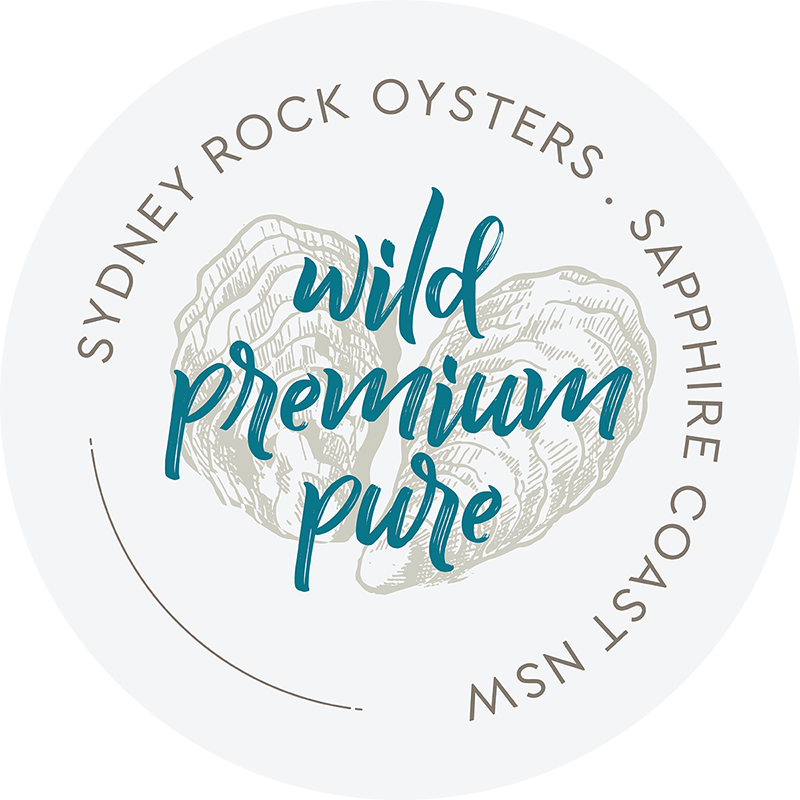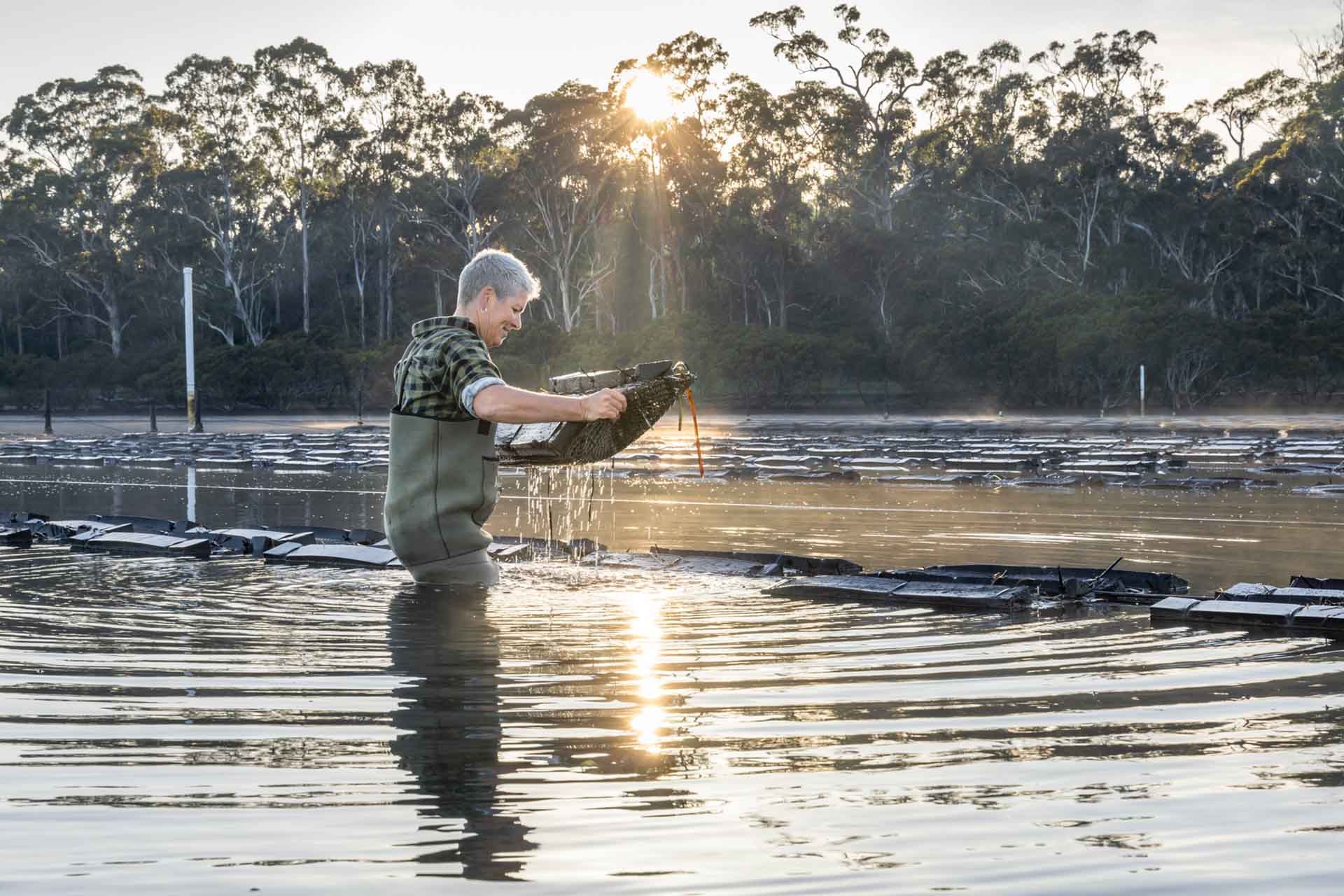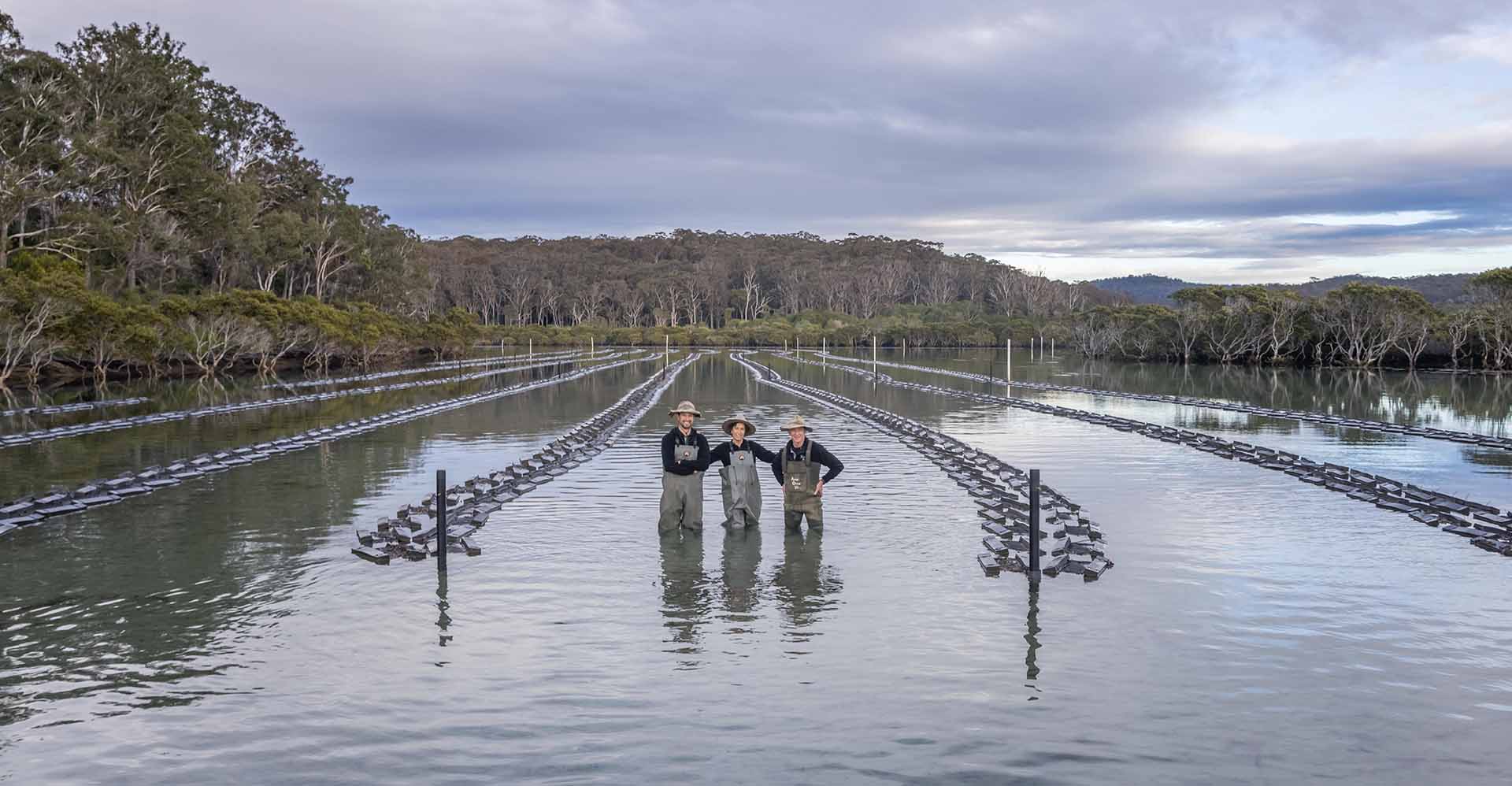Farming
Oysters are farmed at six key estuaries on the Sapphire Coast including Wonboyn, Pambula, Merimbula, Nelson, Wapengo and Bermagui.
Farming Sydney rock oysters is a labour of love, taking a minimum of three years until oysters are ready to harvest. Throughout this long process, farmers are at the mercy of a natural and wild environment.
There are three main stages of oyster growing, including spat collection, on-growing and harvesting.
.
.
.
SPAT COLLECTION
Sydney rock oysters are serial spawners, with female oysters spawning several times a season and releasing up to 20 million eggs each.
Once fertilised, the surviving eggs drift with the tides for several weeks until they find a suitable place to attach themselves and grow. At this stage, the baby oysters are known as spat.
Oyster farmers catch wild spat by setting underwater slats, which provide a convenient and comfortable home.
ON-GROWING
After approximately nine months, the spat are moved to cylinders, baskets or bags, often in different lease areas in an estuary, to continue growing.
Traditionally, oyster farmers ‘finish’ their oysters before harvest by placing them on intertidal racking systems, which periodically expose the oysters at low tide.
This helps to strengthen the abductor muscles, reduce oyster pests and increase shelf life after harvest.
HARVESTING
Sydney rock oysters are at least 3 years old before they are ready to harvest.
Oysters are collected by hand before being cleaned and graded by shell size and weight.
Sydney rock oysters are known for their naturally long shelf life after being harvested.
Unopened, Sydney rock oysters can survive out of the water for up to 14 days. They remain alive until they are shucked.
Restoring the estuary
Our growers utilise the latest environmental practices and technology to produce a premium product and look after the estuary. Most oyster farmers on the Sapphire Coast have transitioned from the traditional rack and rail system to an environmentally sustainable longline system.
This system consists of recyclable floating cylinders, baskets or bags that clip onto a single line, replacing the need for treated pine and tar coated sticks. The system takes up a smaller footprint in the estuary, reduces shading impacts and encourages seagrass meadows to flourish.
Quality Assurance
Sapphire Coast oyster farmers rely on excellent water quality to produce their premium oysters. Our producers conduct extensive water quality monitoring and shellfish testing throughout the entire life cycle of the oyster.
Not only does this guarantee a pure and premium product, but also provides an ongoing evaluation of the health of the estuary. For the ongoing success of the Sapphire Coast oyster industry it is vital that the waterways remain pristine.




